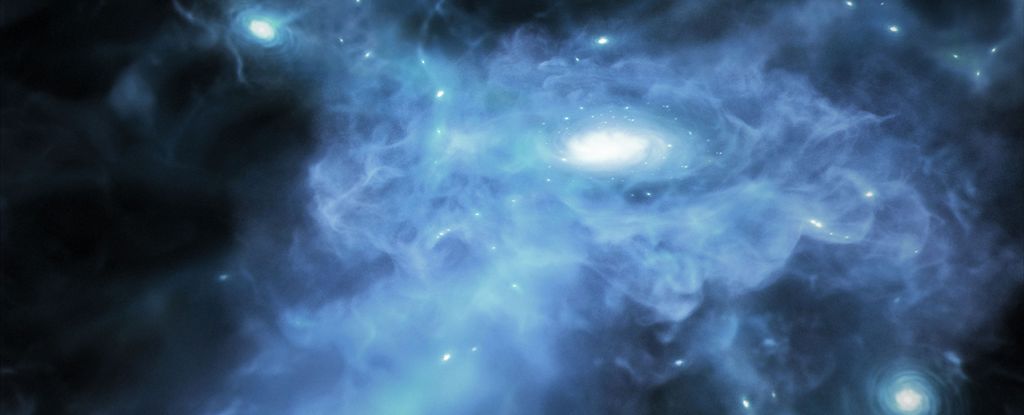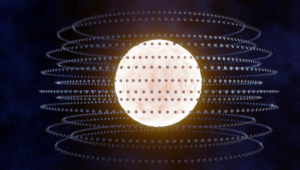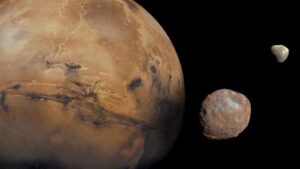Scientists have just identified the formation processes of some of the earliest galaxies in the universe in the turbulent era of the Cosmic Dawn.
JWST’s observations of the early universe about 13.3 to 13.4 billion years ago—just a few hundred million years after the Big Bang—revealed telltale signs of gas reservoirs actively pouring into three nascent and growing galaxies.
“It could be said that these are the first ‘direct’ images of galaxy formation that we have ever seen,” said astrophysicist Kasper Elm Heinz of the Niels Bohr Institute in Denmark, who led the study.
“While James Webb [Space Telescope] previously showed us early galaxies at later stages of evolution, here we witness their very birth and thus the construction of the first star systems in the universe.”
Known as Cosmic Dawn, tThe first billion years after the Big Bang are shrouded in two things: mystery and the haze of neutral hydrogen that permeated the universe and prevented light from spreading freely. The former is actually the natural and direct consequence of the latter, since light is the tool we use to understand the universe.
JWST was designed in part as an attempt to penetrate this haze, since the infrared wavelengths at which it views space penetrate more easily and travel farther than other wavelengths. What we want to know is how it all came together—how from a hot primordial plasma soup the first stars and galaxies coalesced, the fog dissipated under the light of the early objects, and the universe took its baby steps toward what it is today.
So Heinz and his international team used JWST’s powerful infrared eye to peer into the Cosmic Dawn, where they detected a signal traced to three galaxies. Specifically, the signal is emitted by the neutral hydrogen that surrounds them, while the gas absorbs and re-emits the galaxies’ light.
The researchers found that these galaxies existed about 400 to 600 million years after the Big Bang, which took place about 13.8 billion years ago. This makes the three galaxies some of the earliest discovered.
“These galaxies are like sparkling islands in a sea of otherwise neutral, opaque gas,” says Heinz.
In addition, the researchers were able to distinguish the gas reservoirs around the galaxies from the intergalactic neutral gas. These reservoirs were determined to be quite large, covering quite a large fraction of each galaxy, suggesting that they are actively forming in galactic material. And the fact that there was so much of this gas also suggests that the galaxies had not yet formed most of their stars at the time of the observations.
“A few hundred million years after the Big Bang, the first stars formed before stars and gas began to merge into galaxies,” says cosmologist and astrophysicist Darrah Watson of the Niels Bohr Institute. “This is the process that we see the beginning of in our observations.”
We still have a lot of questions about Cosmic Dawn. We have barely scratched the surface and there are still many secrets shrouded in neutral hydrogen, many of which are yet to be discovered. But the three galaxies discovered by Heinz and his team are a step forward. Now that we know the galaxies are there, we can take a closer look at them to better understand the galaxy formation process.
“One of the most fundamental questions we humans have always asked ourselves is, ‘Where did we come from?'” says astronomer Gabriel Brammer of the Niels Bohr Institute.
“Here we piece together a little more of the answer by shedding light on when some of the universe’s first structures were formed. This is a process that we will explore further as we hopefully can put even more pieces of the puzzle together.”
The study was published in Science.



